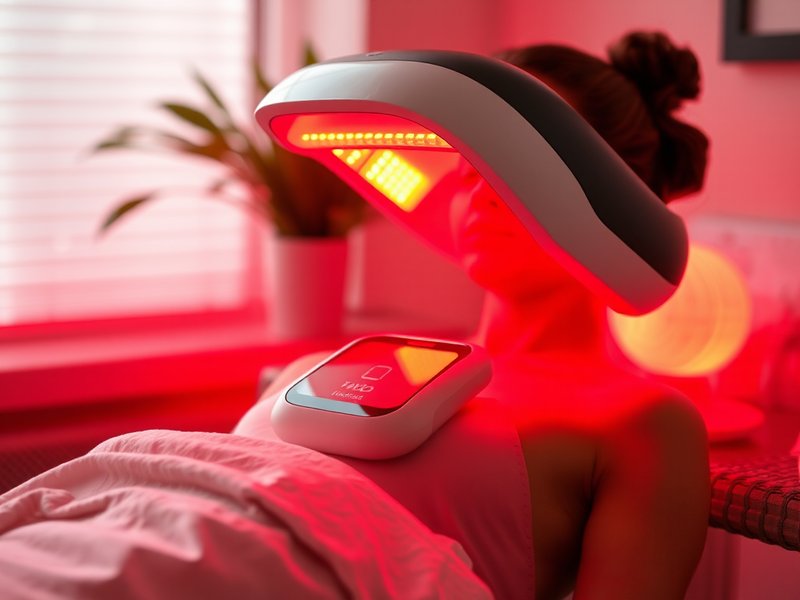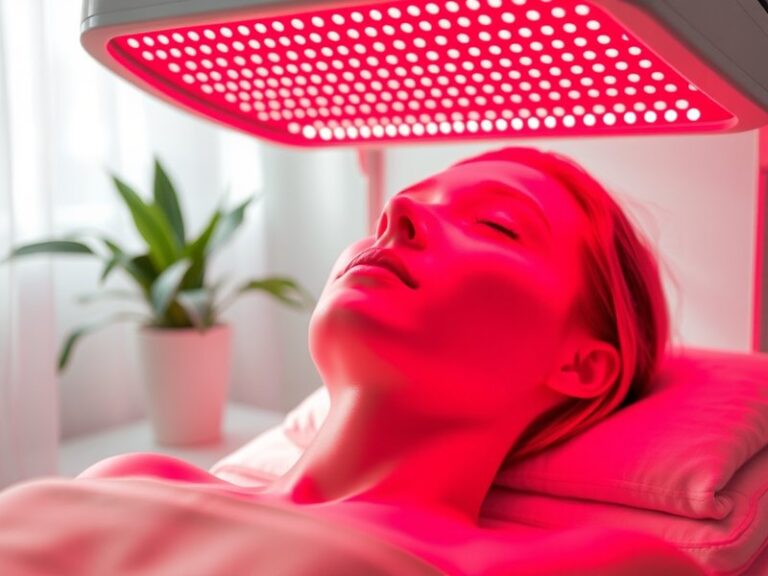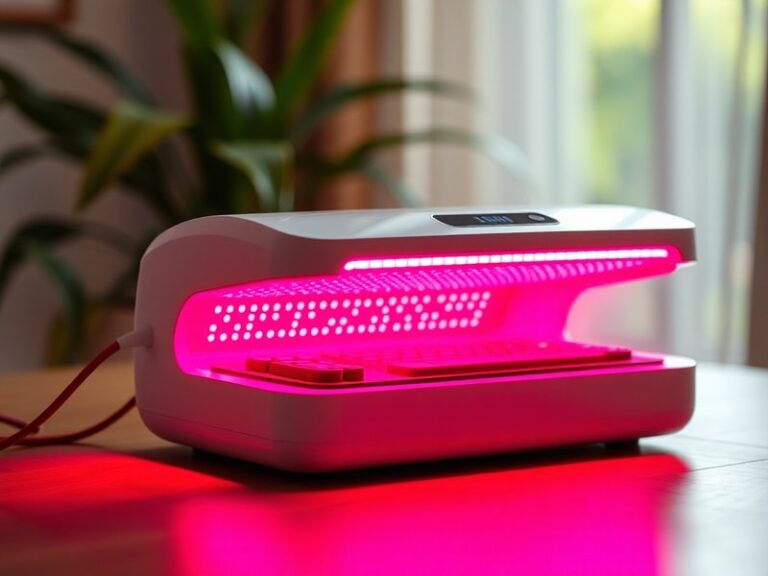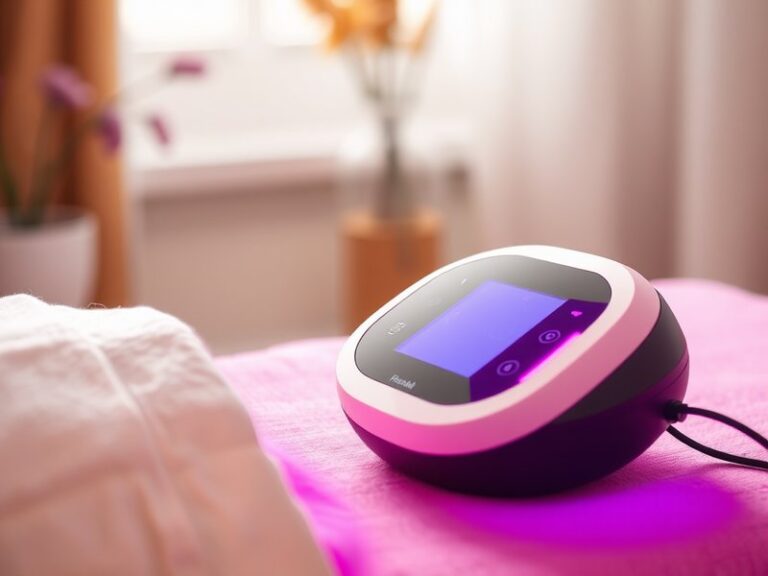What Does Red Light Therapy Do For Pain?
What Does Red Light Therapy Do For Pain?
How can a simple light therapy impact pain relief?
Red light therapy has emerged as a popular alternative treatment for various types of pain, from chronic back issues to muscle soreness. This article will explore what red light therapy is, its benefits for pain relief, considerations before use, possible alternatives, and commonly asked questions regarding its effectiveness.
Key Takeaways
- Red light therapy uses low-level wavelengths of light to promote healing and reduce pain.
- It has shown potential benefits in decreasing inflammation and accelerating tissue healing.
- While generally safe, it is important to consider personal health conditions and consult with a healthcare professional.
What is Red Light Therapy?
Red light therapy, also known as low-level laser therapy (LLLT) or photobiomodulation, involves exposing the skin to specific wavelengths of red and near-infrared light. This non-invasive treatment has been researched for its ability to alleviate pain, reduce inflammation, and promote healing in injured tissues.
The therapy works by penetrating the skin and stimulating cellular functions, increasing energy production within cells, and encouraging the regeneration of tissues. Commonly administered via handheld devices, panels, or larger machines, red light therapy is often used in clinical settings, spas, and at home.
Discover our insights Can Red Light Therapy Be Done at Home?
How Does It Work?
The specific wavelengths (usually between 600 to 1000 nanometers) are absorbed by the mitochondria in the cells, leading to an enhanced production of adenosine triphosphate (ATP), the energy currency of the cell. This increased energy helps to accelerate processes such as collagen production and the release of endorphins, which are natural pain relievers.
What are the Benefits of Red Light Therapy?
Red light therapy offers various benefits that can help with pain management. The following points delve into some of the key advantages.
Pain Relief
Red light therapy has been shown to reduce pain levels in various conditions, including arthritis, fibromyalgia, and sports injuries. Studies indicate that individuals undergoing this therapy often report significant reductions in pain and discomfort.
Reduced Inflammation
One of the critical roles that red light therapy plays is in inflammation reduction. By promoting better circulation and lymphatic drainage, it can help minimize swelling and promote faster healing in injured tissues.
Accelerated Healing
In addition to pain relief and inflammation reduction, red light therapy has been found to speed up the healing of wounds and injuries. It can assist in tissue repair, making it beneficial post-surgery or after sports-related injuries.
Improved Range of Motion
For individuals suffering from joint pain or stiffness, red light therapy can help improve mobility. By addressing inflammation and promoting healing, patients often experience increased flexibility and range of motion in affected areas.
Is it Possible to Use Red Light Therapy at Home?
Yes, many users are able to effectively implement red light therapy in their own homes. Various devices, such as handheld units and light panels, are available for personal use.
What are the Advantages of Home Use?
Using red light therapy at home can be incredibly convenient, enabling individuals to incorporate treatment into their daily routines. Additionally, home devices often come at a lower cost compared to regular in-office treatments from therapists.
What are the Disadvantages of Home Use?
While convenient, home devices may not always deliver the same potency as professional medical devices. Users should ensure they follow instructions carefully to avoid misuse or injury.
Don’t miss Does Red Light Therapy Cause Bowel Movement?
What are the Things to Consider Before Using Red Light Therapy at Home?
Before undergoing red light therapy, especially at home, several considerations are essential.
Consultation with a Healthcare Professional
It’s vital to speak with a healthcare provider, particularly for individuals with pre-existing skin conditions, photosensitivity, or those on medications that increase sensitivity to light.
Quality of the Device
Investing in a reputable, clinically studied device is crucial. Research the manufacturers, read reviews, and ensure the product meets safety standards.
Duration and Frequency of Use
Understanding how long and how often to use the device is essential for effectiveness. Following the guidelines provided by manufacturers or healthcare professionals can maximize benefits.
What are the Alternatives to Red Light Therapy?
Several alternative treatments exist for pain management, each with its unique benefits.
Physical Therapy
Physical therapy involves exercises and techniques designed to improve mobility and reduce pain through skilled therapy sessions tailored to individual needs.
Massage Therapy
Massage therapy can alleviate tension in muscles and improve circulation, providing immediate relief from pain and discomfort.
Acupuncture
Acupuncture is a traditional Chinese medicine technique that involves inserting needles into specific points to relieve pain and promote healing through energy flow.
Chiropractic Care
Chiropractic adjustments can help align the spine and relieve pressure on nerves, often leading to pain relief for various musculoskeletal conditions.
Conclusion: Is it Recommended to Use Red Light Therapy for Pain?
Red light therapy presents a valid option for managing pain and promoting healing, showing promising results in various studies. However, it is essential to consider individual health circumstances and consult with healthcare professionals to determine its suitability. When used correctly, red light therapy can be a beneficial component of a comprehensive pain management strategy.
Frequently Asked Questions
Is red light therapy safe for everyone?
Red light therapy is generally safe for most individuals, but people with certain conditions should consult a healthcare professional prior to use.
How long does it take to see results?
Many individuals report improvements after several sessions, though specific results can vary based on the condition being treated and individual response.
Can I combine red light therapy with other treatments?
Yes, red light therapy can complement other treatments such as physical therapy or medication, but it’s essential to discuss with a healthcare provider for the best approach.
How often should I use red light therapy?
Usage can vary based on the device and severity of the condition. Typically, sessions last from 10 to 30 minutes a few times a week, but personalized recommendations are best.
Are there any side effects?
Generally, red light therapy has minimal side effects, but some individuals may experience temporary redness or tightness in the treated area.






